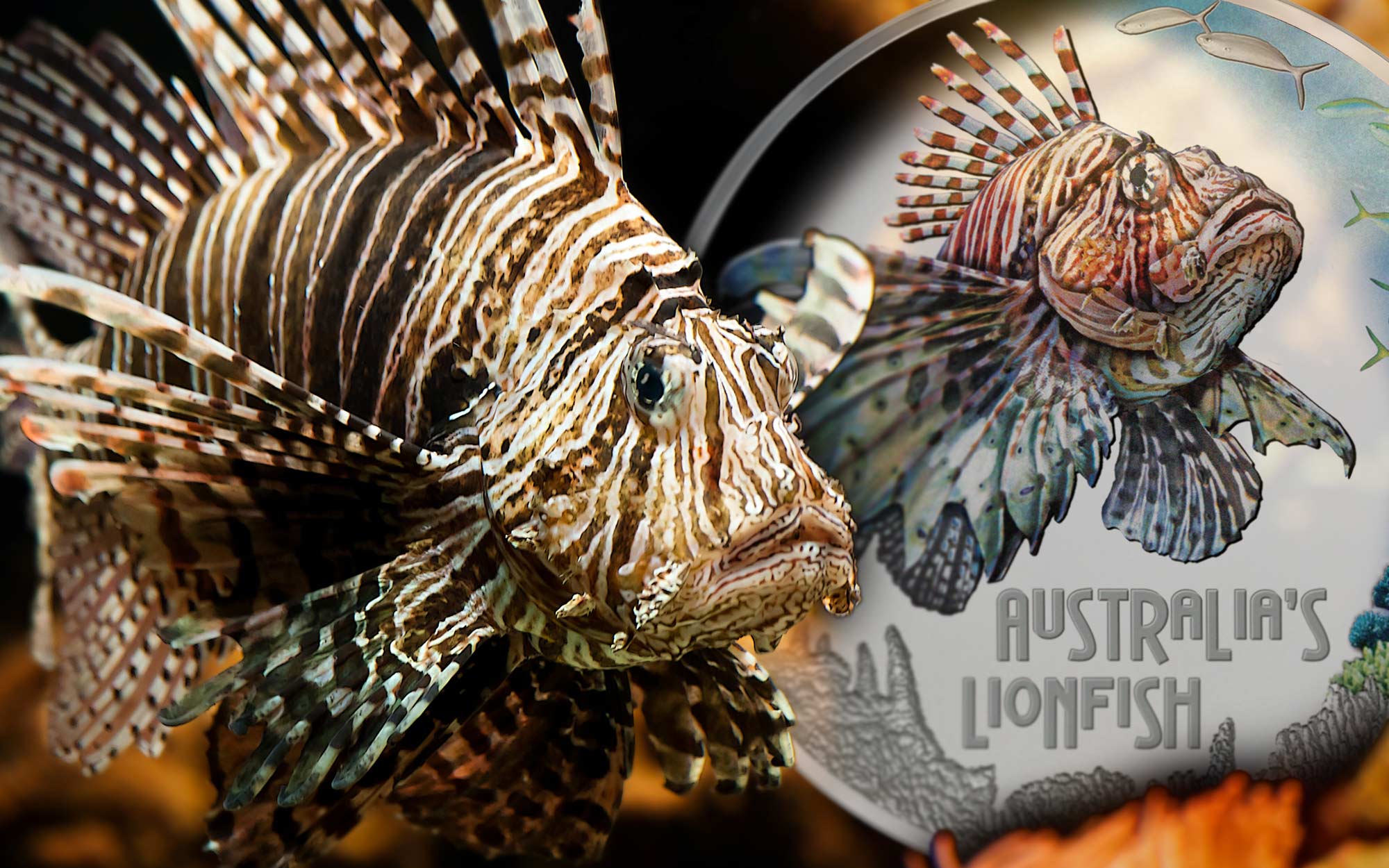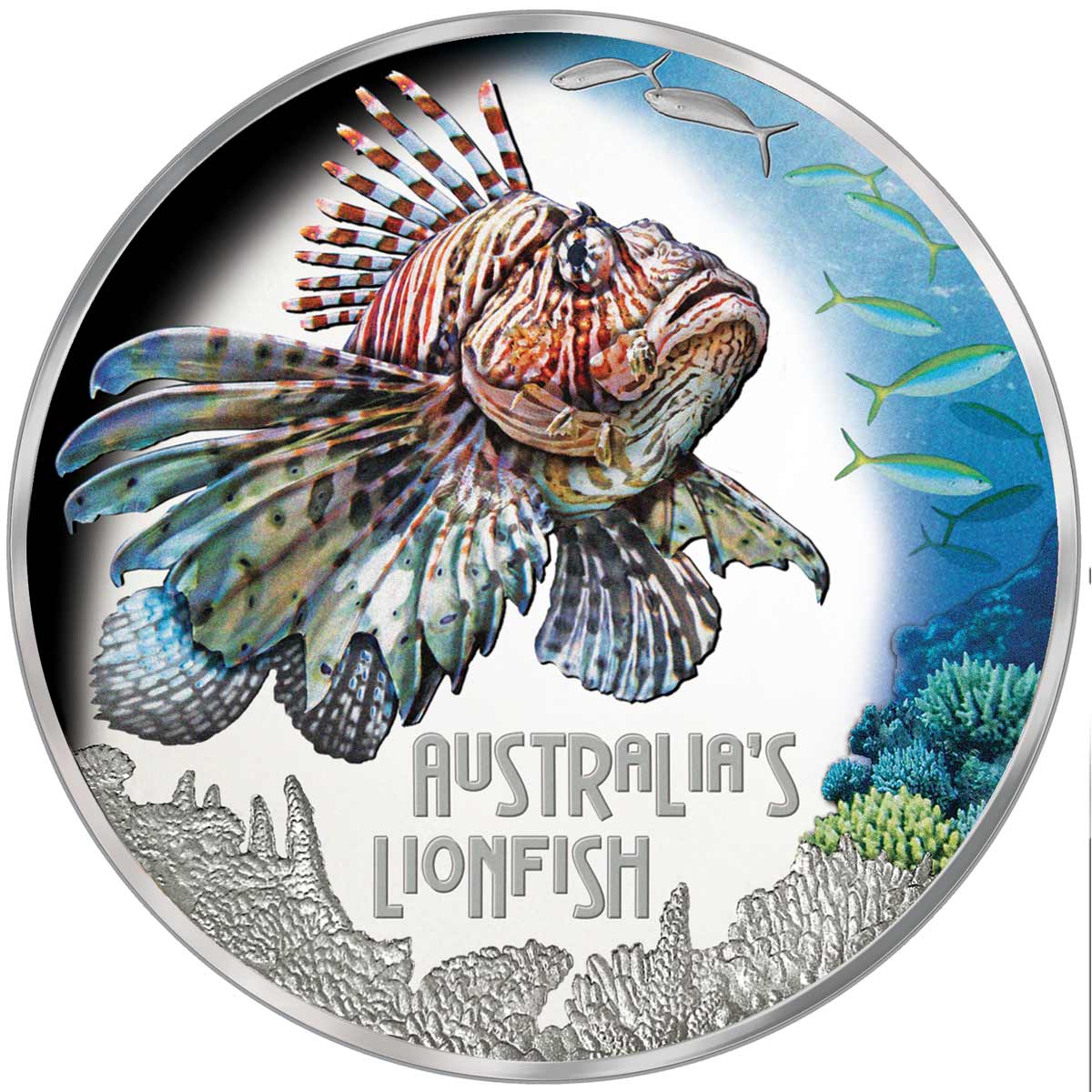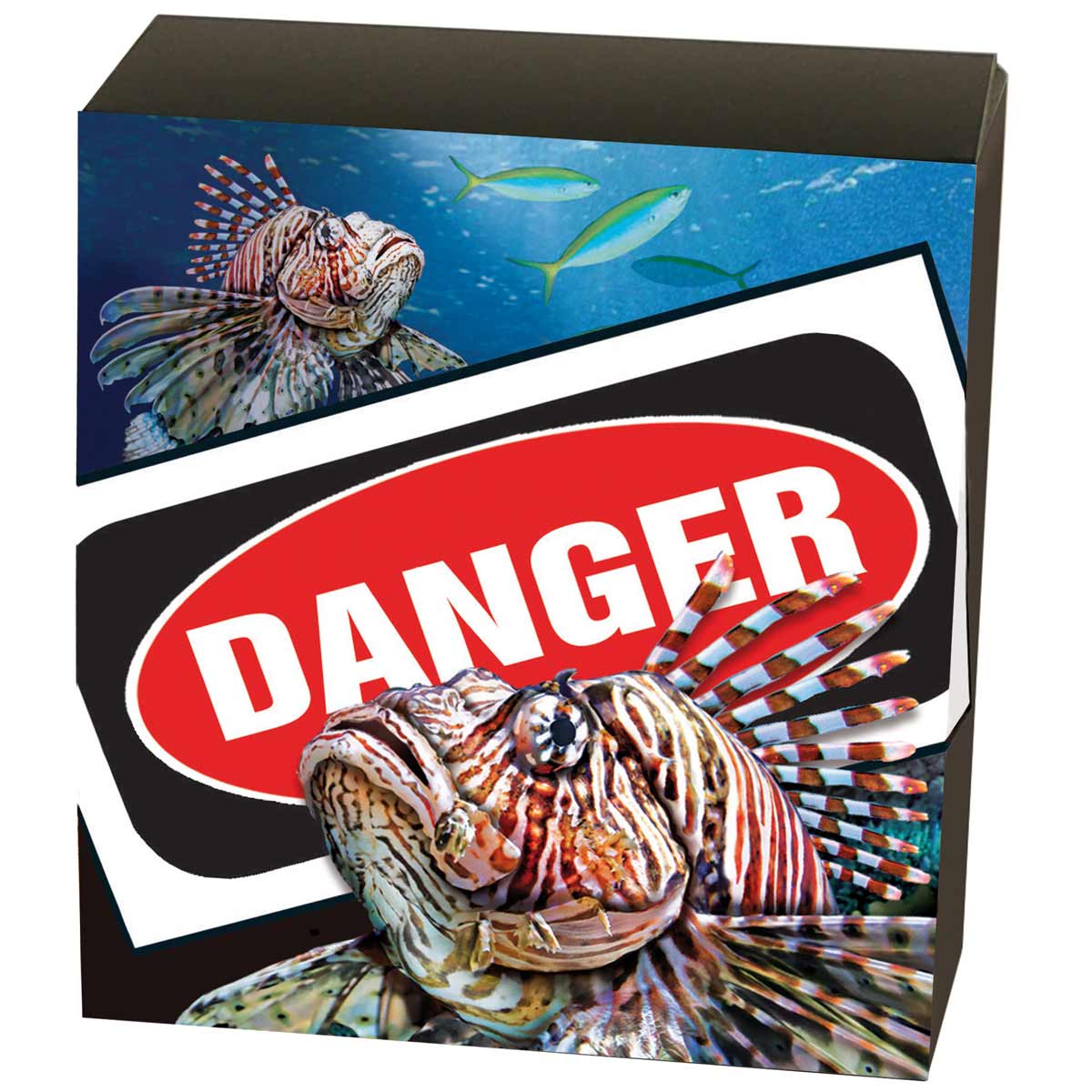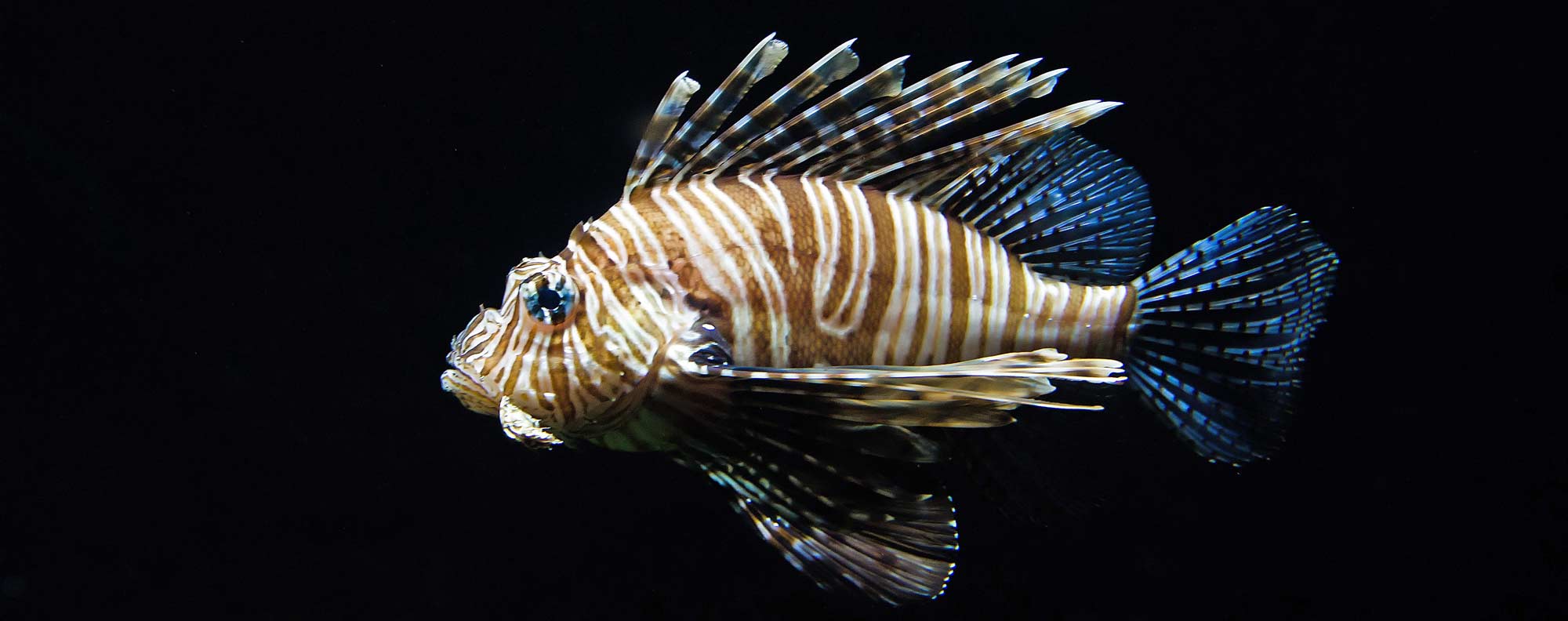Deadly & Dangerous is back with another in the seemingly endless lineup of malevolent Australian fauna
Did uyou here the one about the Australian fluffy bunny rabbit? Neither did we. The more you read about the wildlife of Australia you’d realise the bunny was probably a blood-sucking zombie species with razor claws and a poison that kills a fully grown human before they can hit speed-dial for an ambulance. In light of this, Downies and the Perth Mints decision to realease an Australian wildlife series of coins called Deadly & Dangerous seems particularly inspired. Let’s face it, the list of critters to showcase is wide and fascinating.
The 14th annual issue isn’t a particularly nasty piece of work. The Lionfish is a beautiful fish, covered in venomous spines as you would expect, but not particularly threatening to man. They are one of the world’s most devastating invasive species however, causing untold damage to marine environments around the US and the Caribbean where they have few natural predators. All because of the actions of stupid aquarium owners unable to care for a fish that looks stunning, but is ultimately a complete thug.
Whatever its failings as something truly Deadly & Dangerous, the Lionfish is a pretty subject for a coin and the depiction here is a fine one. Not an adventurous format, the 1oz coloured proof silver coin is nevertheless a hugely popular one. The obverse sticks with the Ian Rank Broadley effigy of Queen Elizabeth II, although we’d expect the Jody Clark one to put in an appearance next year should the series continue.
Packaging has always been top notch, the polished wooden box making display easy. A certificate of authenticity is enclosed and the whole is wrapped up in a neat, themed shipper. Buyers of previous coins will likely jump in to add this one and you can read and view all the previous issues in our Coin Series Profile. Available now.
LIONFISH
The red lionfish (Pterois volitans) is a venomous coral reef fish in the family Scorpaenidae, order Scorpaeniformes. P. volitans is natively found in the Indo-Pacific region, but has become an invasive problem in the Caribbean Sea, as well as along the East Coast of the United States. This and a similar species, Pterois miles, have both been deemed invasive species. Red lionfish are clad in white stripes alternated with red/maroon/brown stripes.
Adults in this species can grow as large as 47 cm (18.5 in) in length, making it one of the largest species of lionfish in the ocean, while juveniles are typically shorter than 1 inch (2.5 cm). The average red lionfish lives around 10 years. As with many species within the family Scopaenidae, it has large, venomous spines that protrude from the body, similar to a mane, giving it the common name lionfish. The venomous spines make the fish inedible or deter most potential predators.
Lionfish reproduce monthly and are able to quickly disperse during their larval stage for expansion of their invasive region. No definitive predators of the lionfish are known, and many organizations are promoting the harvest and consumption of lionfish in efforts to prevent further increases in the already high population densities.
| SPECIFICATION | |
| DENOMINATION | $1 TVD (Tuvalu) |
| COMPOSITION | 0.999 silver |
| WEIGHT | 31.107 grams |
| DIMENSIONS | 40.6 mm |
| FINISH | Proof |
| MODIFICATIONS | Colour |
| MINTAGE | 2,500 |
| BOX / COA | Yes / Yes |






Leave A Comment